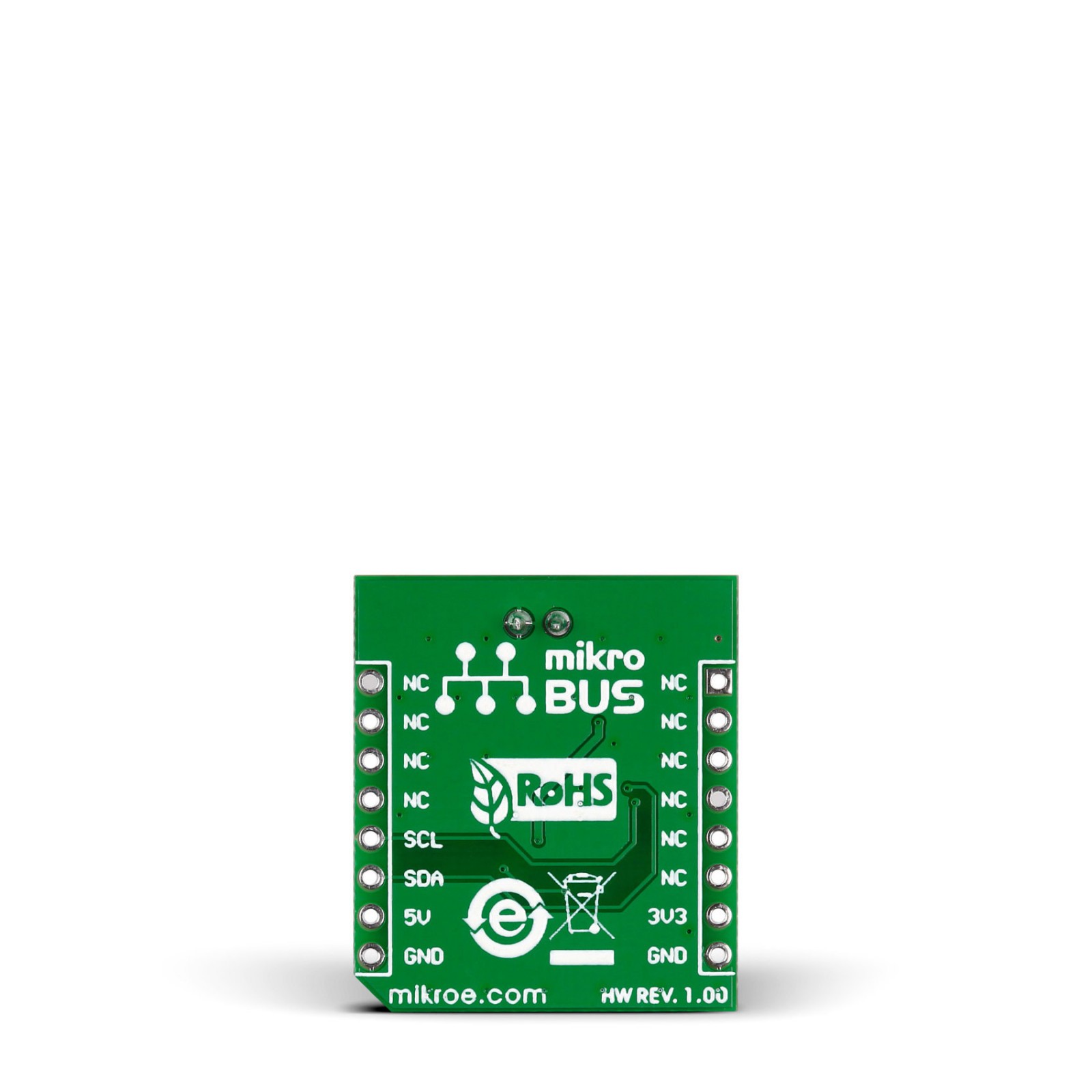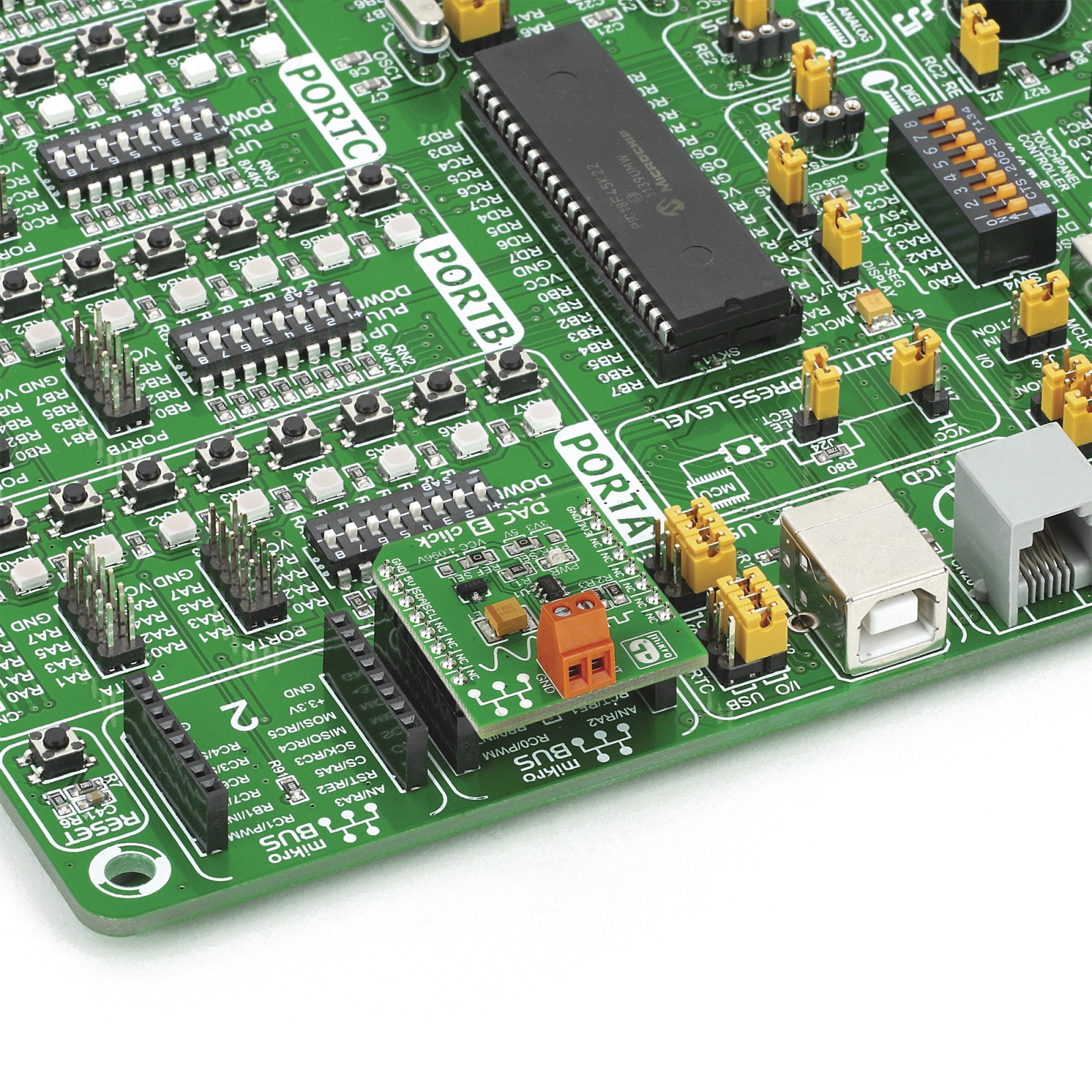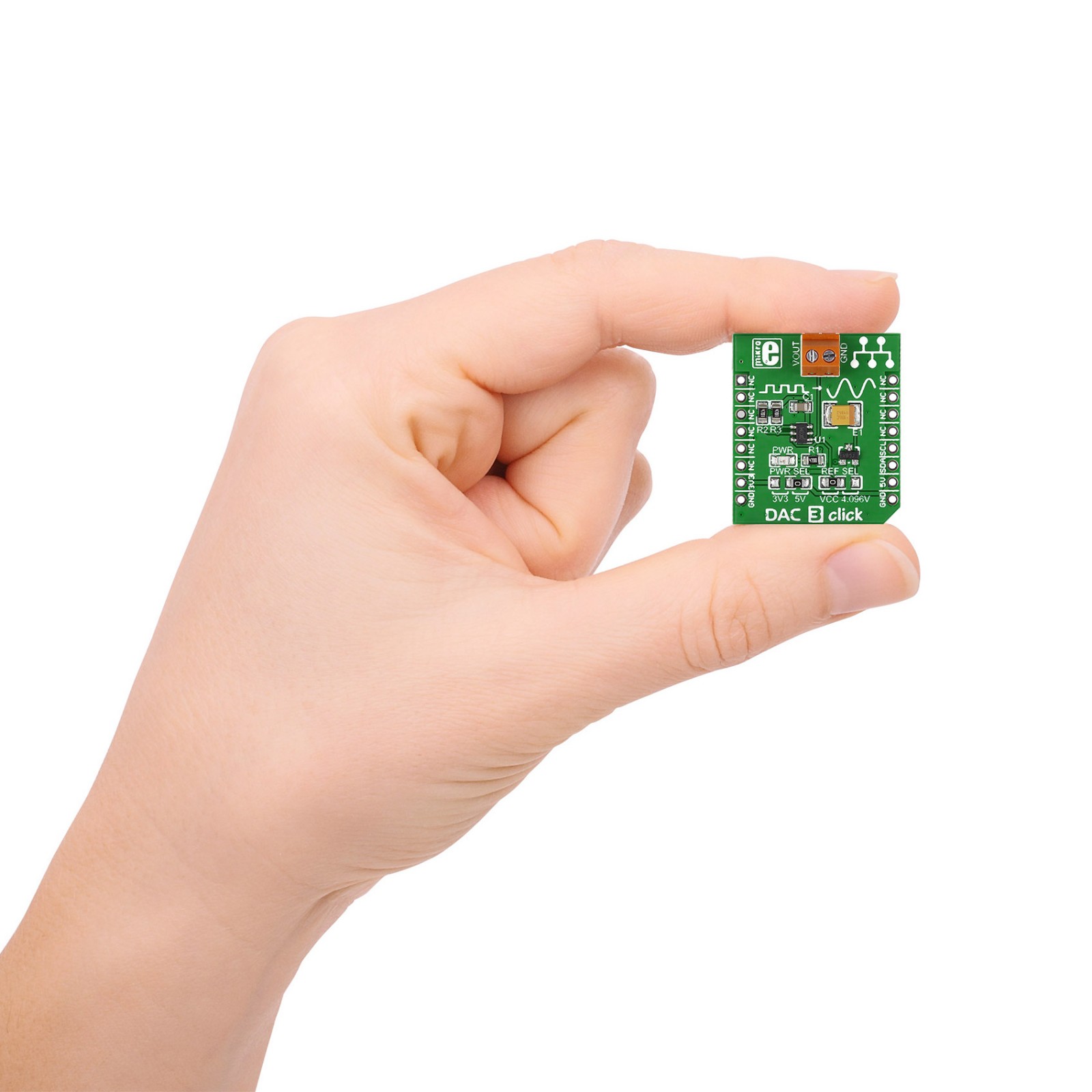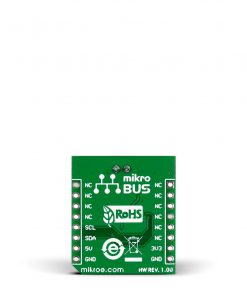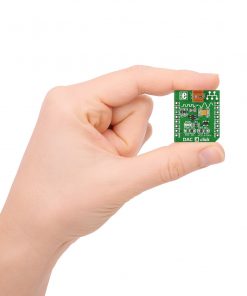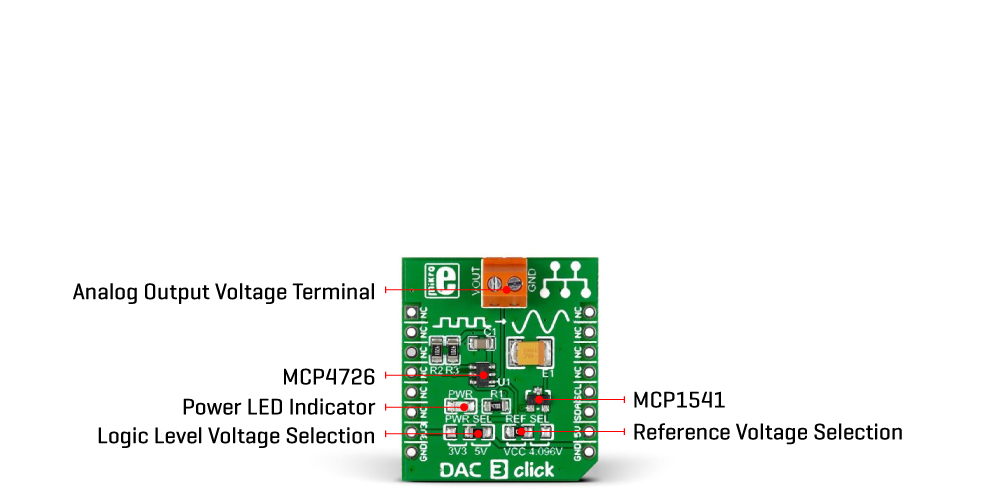Subtotal: R2,225.00
DAC 3 Click
R410.00 ex. VAT
DAC 3 Click is a compact add-on board with a fully-featured, highly accurate digital-to-analog converter. This board features the MCP4726, a 12-bit voltage output digital-to-analog converter from Microchip. The MCP4726 has a rail-to-rail output, low power consumption, and EEPROM as non-volatile memory for storing DAC register and configuration bit values. The DAC 3 Click also has the MCP1541, a 4.096V voltage reference from Microchip, to provide an external optional reference voltage to the MCP4726 DAC chip. This Click board™ makes the perfect solution for offset and gain control applications, VCO tuning, programmable reference, and more.
DAC 3 Click is supported by a mikroSDK compliant library, which includes functions that simplify software development. This Click board™ comes as a fully tested product, ready to be used on a system equipped with the mikroBUS™ socket.
Stock: Lead-time applicable.
| 5+ | R389.50 |
| 10+ | R369.00 |
| 15+ | R348.50 |
| 20+ | R335.38 |

 Accel Click
Accel Click  GSM Click
GSM Click 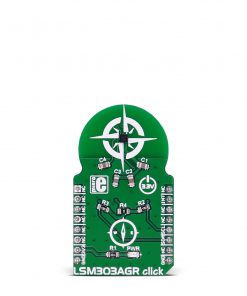 LSM303AGR Click
LSM303AGR Click 
